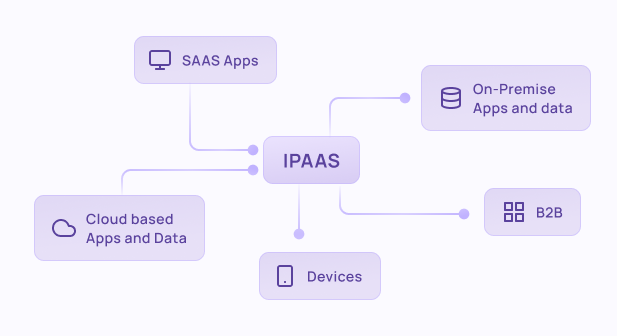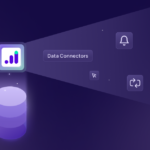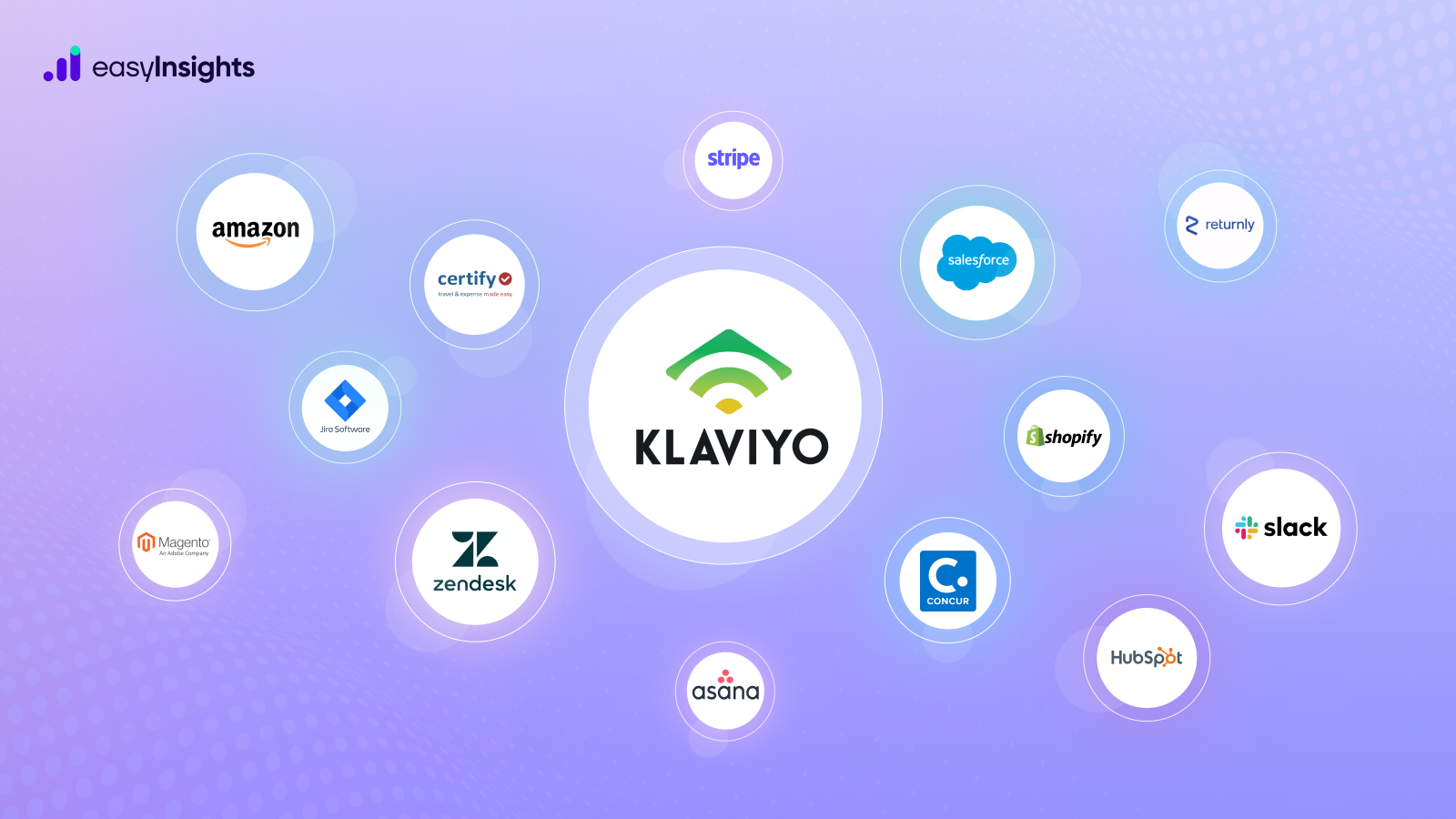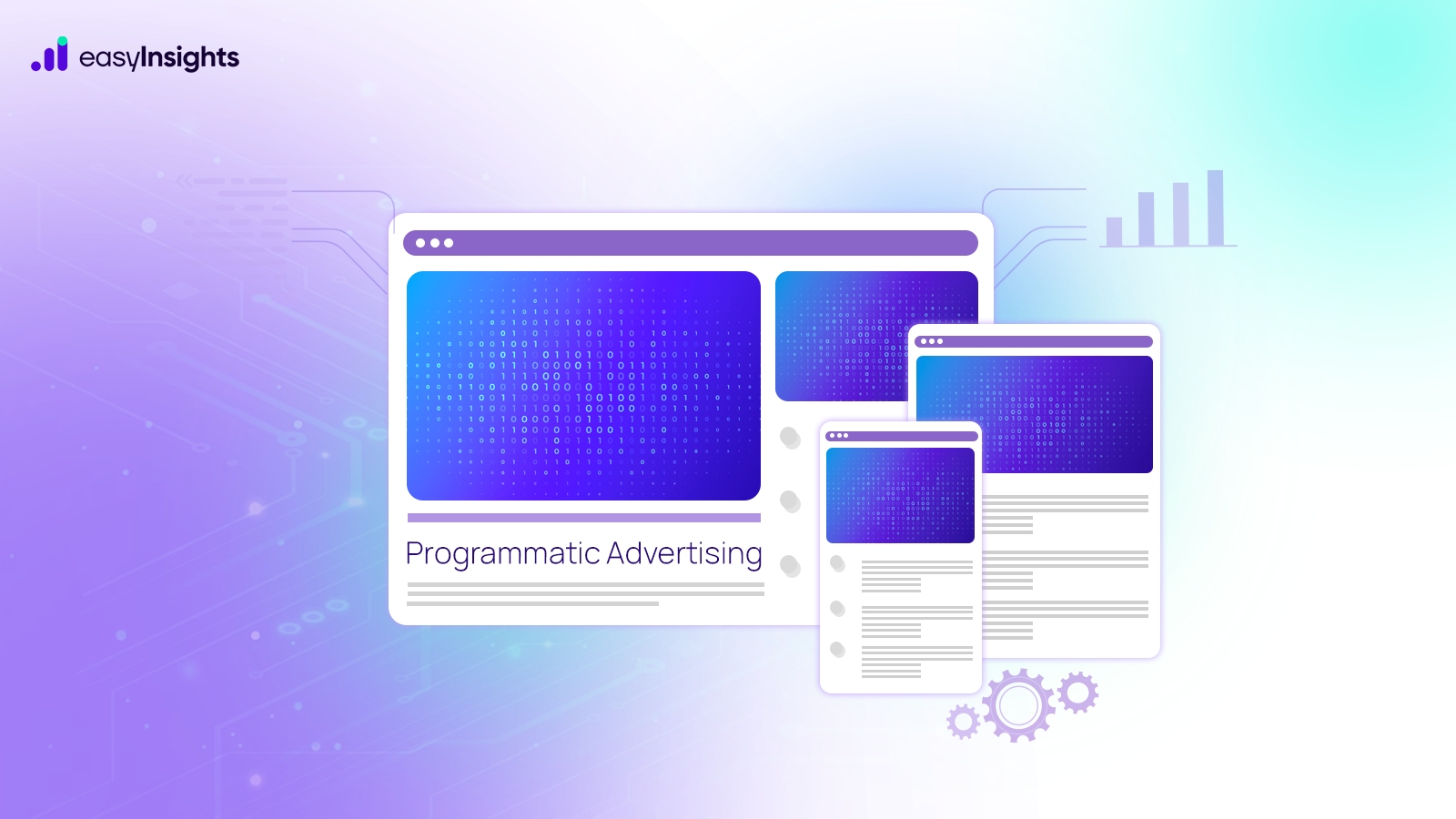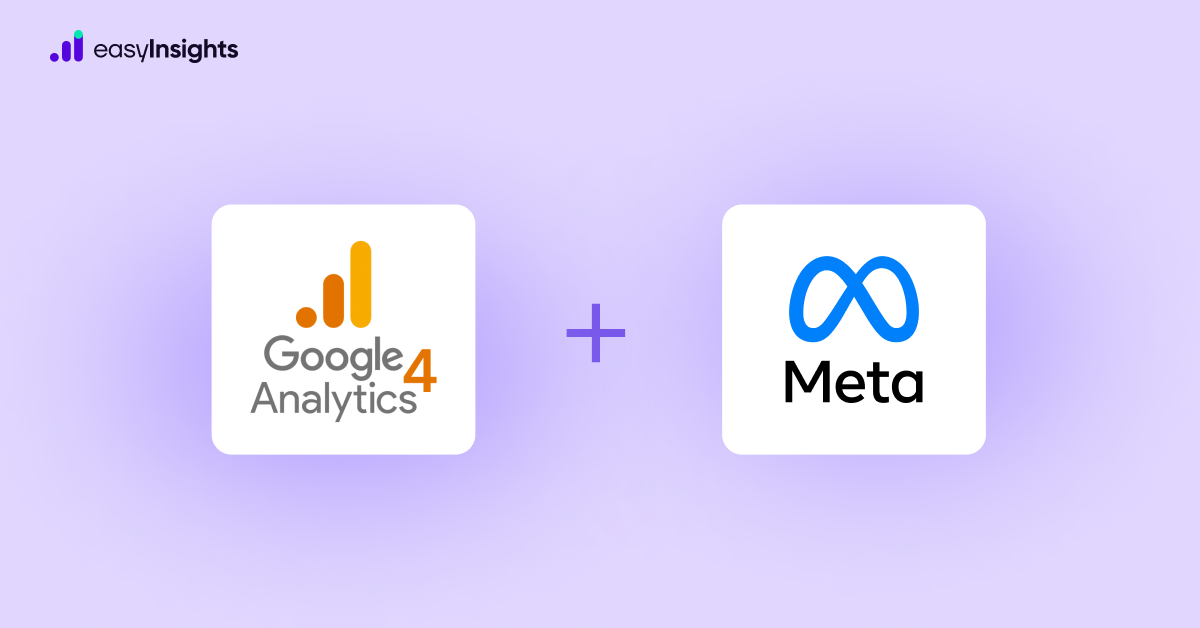
It’s a startling fact that businesses only leverage about a third of the data they collect. For a typical business, this underutilization results from having over 2,000 siloed data sources on average, hampering their ability to make informed decisions. The solution? Data activation.
Data activation is a key aspect of data management, giving your teams a comprehensive view of data, and enhancing their ability to not only extract insights but also to act upon them.
So, join us as we’ll explain what exactly data activation is and how it can help you unlock your business data’s true potential.
Jump ahead to:
What Is Data Activation?
The issue of data silos is well-known in the business world. In fact, that’s the whole reason why data warehouses exist in the first place. Data warehouses were created to centralize data from varied sources like CRMs, POS systems, and analytics platforms.
But centralization alone isn’t enough. Often, only SQL-savvy power users can access this centralized data, leaving non-tech staff, like marketers and sales reps, in the lurch.
Data activation changes this dynamic.
Data activation is a process that transforms raw data stored in data warehouses into valuable insights, driving strategic decision-making. It does so by making data accessible across various business applications so it is readily available to the end users.
The result? Non-tech users can make data-backed decisions independently, without constant reliance on the data team.
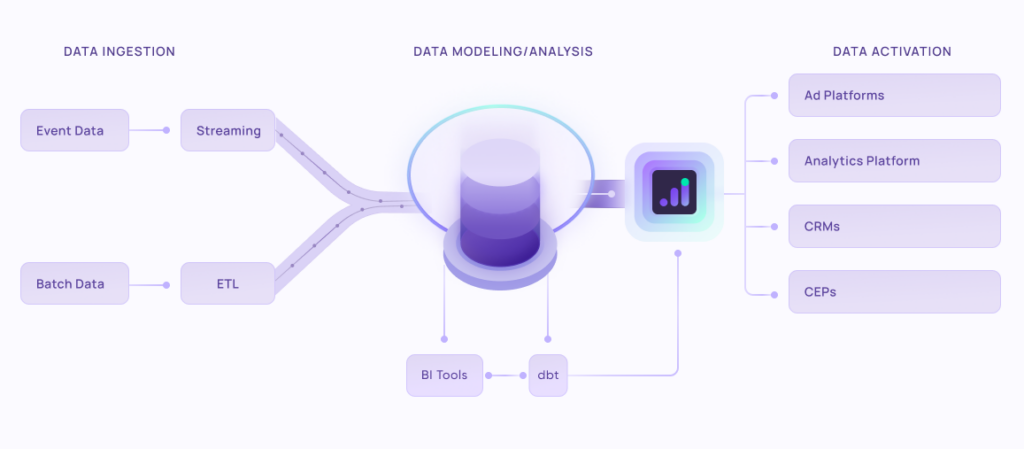
Additional Read: Data Democratization: Everything You Need to Know
How Does Data Activation Work?
From collecting data to actually making your decisions based on it, data activation can be broken down into a five-stage process. They are:
- Data Collection: Gathering diverse and relevant data from various sources is the foundation of data activation. This step involves accumulating comprehensive data sets from devices and software used for different business functions.
- Data Integration and Processing: This step involves combining data from different sources to create a unified database. It also includes cleaning and organizing the data to ensure accuracy, consistency, and usability. Proper data integration and processing are crucial for preparing the data for effective analysis.
- Data Analysis: Analyzing the integrated data to extract meaningful insights is at the core of data activation. This involves using analytical tools and techniques to identify patterns, trends, and correlations within the data. The insights drawn in this step form the basis for informed decision-making.
- Data Sync: Transformed and modeled data is then used to create comprehensive data views that offer insights into customer attributes like sign-ups, cart abandonments, LTV, number of sessions and their duration, etc. This data is then mapped back to the tools your teams use, like CRMs, Advertising tools, email automation software, etc.
- Decision Making: The final and most crucial step is applying the insights gained to real-world decisions and strategies. This could involve adjusting marketing approaches, refining operational processes, or developing new products or services based on data-driven insights.
It is important to note that data activation isn’t a one-time exercise but a continuous process. You must use insights and feedback gathered to refine and improve your strategies. That is the only way to ensure that your data activation strategy remains relevant and effective over time.

How Does Data Activation Help Marketers?
Marketing teams are the biggest beneficiaries of data activation. While their everyday tools like Google Ads and Facebook Ads tell them all they need to know about the performance of their campaigns, creating segments and custom audiences is where data activation shines.
Consider this scenario: Your team aims to retarget customers who have been inactive for the past 30 days. Typically, this would involve requesting the data team to export a dataset for these users, followed by a manual upload to various advertising platforms. This process is not only time-consuming but also prone to delays and errors.
However, with data activation, your data team can directly model and segment data within the data warehouse itself. These tailored data segments are then seamlessly synced with advertising platforms. It allows marketers to utilize this data for nuanced tasks like personalization and targeted retargeting campaigns.
Moreover, data activation empowers marketers to craft more personalized content strategies and make bespoke product recommendations, enhancing customer experience. It also enables a deeper, more nuanced understanding of the target audience.
By harnessing the power of data activation, marketing teams can transition from broad, generic strategies to highly focused and effective campaigns, elevating the overall marketing efficacy.
Additional Read: Farewell to Third-Party Cookies: Refining Retargeting Tactics
How Brands Activate Their Data?
The biggest hurdle in activating data is moving it out of the warehouse and mapping it back to relevant end-user applications. Data engineers have to integrate third-party APIs or create custom data connectors from scratch to create new data pipelines for each business app.
Engineers also rely on certain tools to streamline this process, which include:
1. Data Activation via Customer Data Platform
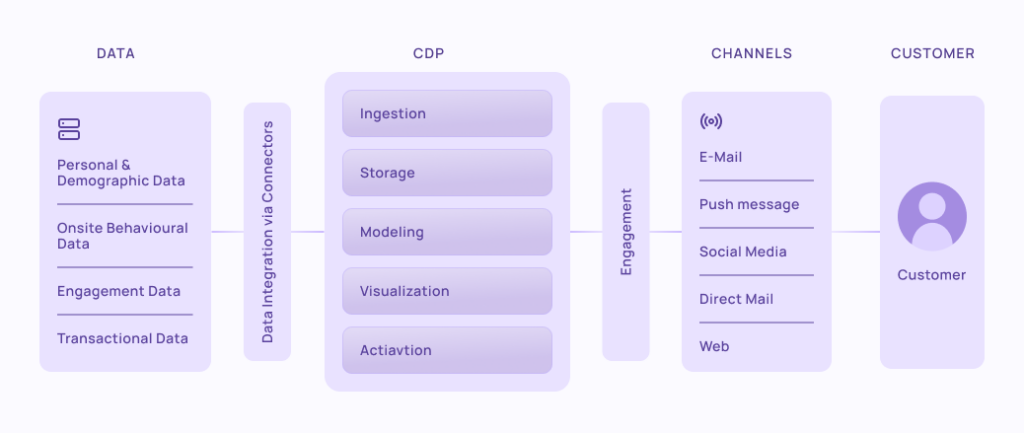
Customer Data Platforms or CDPs centralize multi-channel data, create unified customer profiles, and send data to other tools. They act as a one-stop destination for all your customer data. However, they aren’t as effective as they seem.
The biggest drawback of CDPs is that they create a duplicate data source parallel to your data warehouse. While CDPs use data connectors to integrate apps, they may not always feature data connectors for all your business tools.
Besides, CDPs employ data anonymization techniques to safeguard information due to privacy regulations. So, you can only map attributes with anonymous entities like accounts, making it difficult to create accurate customer profiles.
As a result, using CDPs can quickly become counterproductive. You have to move data out of your data warehouse while it continues to be the ultimate source of customer data and insights. Also, there’s no guarantee that the CDS will integrate with all sources and destinations.
2. Integration As a Platform
Integration as a Platform or iPaaS is a suite of cloud services used to integrate various applications and data sources deployed across various environments.
While they aim to provide a better alternative to CDPs, they aren’t for your average marketer or sales rep. In order to integrate data from one tool to the other via iPaaS requires the use of custom code to create complex workflows. For that, you need specialized personnel, limiting the integrations’ access to only IT and engineering teams.
Apart from that, iPaaS solutions require investment in robust infrastructure and active management from an in-house team. They get expensive as you scale your integrations, making them a viable option only for large-scale enterprises.
3. Point-to-Point Integrations
Point-to-point or P2P integrations include the likes of Zapier and Tray. They act as middleware between software A and software B. This is a problem as it prevents you from leveraging data models and customer profiles stored in your data warehouse.
When working with such tools, you may need to create multiple connections between the apps for the various tasks you plan to accomplish. These connections rise exponentially as your tech stack scales, increasing not only the cost of using the P2P tool but also making it difficult to manage innumerable connections.
4. Reverse ETL Platforms

While ETL (Extract, Transform, and Load) platforms integrate different data sources into a warehouse, reverse ETL solutions integrate data warehouses with your business applications, enabling data activation in its true sense.
With reverse ETL, you don’t need to create a duplicate data repository outside of your warehouse. Instead, these tools read data directly from the warehouse and sync it with connected endpoint applications.
You only have to ensure that the data is properly structured and align it with rows and columns in the destination. This enables you to leverage first-hand and latest data from your warehouse.
Many reverse ETL solutions provide no-code or low-code interfaces, making them perfect for your non-tech staff. As a result, data is free from the virtual walls of the digital divide and your marketing, sales, and support teams can also use it to take data-backed actions.
Additional Read: Why is Data Maturity Important?
Activate Your Business Data with EasyInsights
Data activation is an important step in data management for every organization aiming to attain data maturity. It requires a robust activation platform that is not only flexible but accessible to all. If you are looking for such a solution for your team, you must check out EasyInsights.
EasyInsights is an end-to-end data automation platform. It is the only tool you need for all your ETL and reverse ETL workflows. This platform automates data collection from over 50 business applications, funneling it directly into your data warehouse.
What sets EasyInsights apart is its user-friendly interface, designed to simplify the processes of cleaning, transforming, and creating comprehensive data views. Moreover, custom attributions and tailored integrations give a clear picture of campaign performances, source-driven acquisitions, and LTV.


